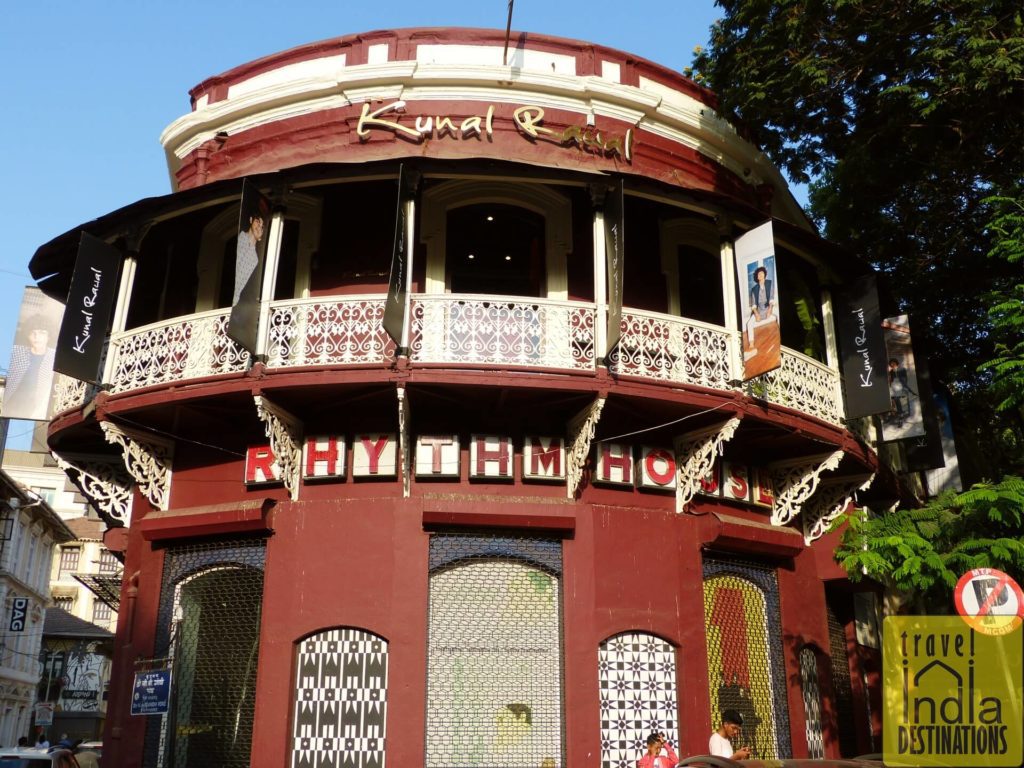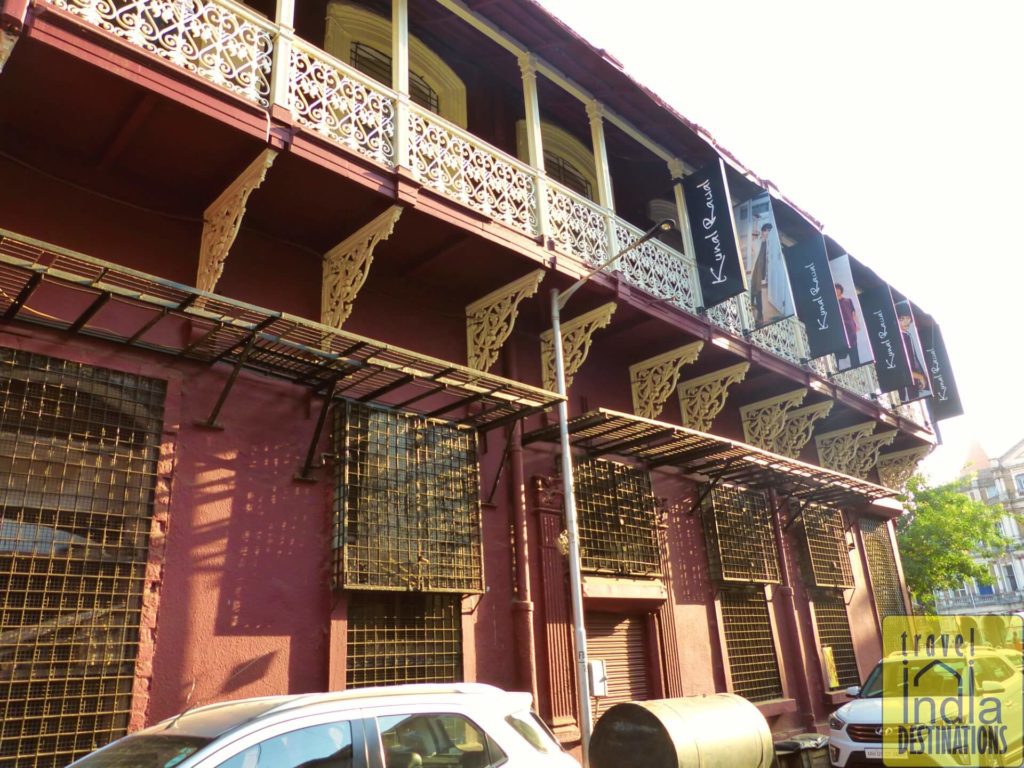In one of my previous posts on Mumbai banks, I covered some of the top banks in the city that has some cool antique doors. However, I also mentioned that one of the challenges for Thursday Doors is how I can incorporate history seamlessly into the narrative. I’m no history student, but I love to serve ‘something boring’ in my own innovative way. This week, I take you back in time when music could touch your heart and you could touch music, literally.
Today, we live in the world of music apps and websites and devices that stream music to multiple devices. The digital age has made it all-easy and super-convenient for us to listen to any song or music we want to hear. Just type in the name of the song or the artist and you got everything that you need. However, things were different in the days when the benchmark of good music was not YouTube views, subscribers and likes.
Music is an integral part of the city in many different ways. Obviously, there are people living here that hail from different corners of the country and the world. This means that the audience here is open to good music, both locally and globally.
A year after India’s independence, Bombay (now Mumbai) saw the birth of an iconic music store named Rhythm House. Tucked in one corner of the Kala Ghoda area, this music store was the beating heart of many local residents passionate about music. Suleman Nensey founded the store in 1948 and initially, it sold music equipment.

However, it didn’t do much business and eventually, Mehmood Curmally’s father, Mammoo, became a partner. Together, they decided to get away with selling music equipment and got into vinyl records.
Back in those golden days, most of the records sold in India were imported. The Bollywood (Hindi film industry) was producing good music but it wasn’t enough for the insatiable appetite of the audience. Listening to music on 78 rpm records made of shellac was a luxury for most working-class Bombay residents. To enjoy good music, you need a gramophone and a regular supply of records that only the elite class could afford.
By mid-70s, the business was stable, but not successful. The original owner of the store, Suleman Nensey passed away. This is when Mammoo Curmally decided to get additional help. He turned to his brother for some assistance.
Amir Curmally, brother of Mammoo Curmally, was working as a senior manager in the advertising department in the Imperial Tobacco Company in Calcutta (now Kolkata). Mammoo invited his brother to assist him in running the business. Amir quit his job and came down to Bombay.
Together, they tried to push the sales of the store, but buying music LPs was not a priority for a common working-class customer. However, Rhythm House still had devoted followers that would visit the store regularly. By the early 1980s, Rhythm House became a household name in the city. The view of thousands of vinyl LPs stacked in order on shelves was nothing short of heaven for music lovers.
However, the challenge was just around the corner for the owners of the Rhythm House because, by the 80s, vinyl LPs was making way for cassette tapes. While cassette tapes were expensive, the rise of T-Series spearheaded by Gulshan Kumar revolutionized the music industry forever and completely.
T-Series started selling cassettes at affordable prices. The concept of listening to original music was now accessible to the common man. For Rhythm House, this was the best period they had seen so far. The store successfully managed to make the transition (from LPs to cassettes) as they sold a huge database of music collections that no other music store in Bombay would have. The store was famous for its Hindustani and Carnatic music collections as for the Western genres.

When the 90s arrived, Rhythm House was still going strong. The power of the Internet was still a distant dream. This was the time when those round shiny compact discs made their way into the Indian markets. Initially, the CDs and DVDs were expensive, but over a period of time, they became accessible to a general audience.
This was also the time (1999) when I was in Elphinstone College, which is adjacent to this store. For me, the best memories of the Rhythm House was buying audio cassettes, window shopping and listening to new CDs for free.
By the turn of the century, internet cafes were mushrooming all over the places and the concept of MP3s and downloadable music (legal and illegal) made its way in India and Mumbai as well. This was truly the beginning of the end of this iconic store. There was no need to visit the store personally now.
The concept of free downloadable music on the internet was quite a challenge for the store owners. The arrival of the online retailers that sold CDs and DVDs to music lovers was the final nail in the coffin. It was time for the store to make some unpleasant and hard choices.
This iconic music store that attracted music lovers, artists and celebrities for years decided to shut doors in 2016. There are local and national groups on the Internet that still want the store to re-open. However, the future of this music store is yet undecided.
6 comments
So many music stores opened, thrived and faded away in this country, Sharukh. I can remember over a dozen that were important to me as I moved around. This is a sad story, but only if the building can’t find a new occupant. That’s what I like about buildings like this. They are iconic enough to last through several failed businesses. Thanks for the history.
You’re welcome, Dan.
How sad that it had to close. Still an attractive building and a good story. Great memories. 🙂
janet
In Jim Morrison’s words – This is the end, my beautiful friend. The end of our elaborate plans. The end of everything that stands. The end. Thank you, Janet for your comment and time.
Love that balcony in the round! Hey – don’t think yourself as boring! If you were, you couldn’t have a blog:) (joking!)
Great to find you on my blog -There seems to be a lot of info around on Hugenots, but since Wikipedia is for a great part written by non-experts, I cannot be sure if the emphasis on things are in the right place, if you know what I mean.
Thank you for your comment. Well, I actually meant is that many people find ‘history’ boring. You know the way it is taught to us in schools. I found it boring myself. I was no history student. However, I end up taking literature in college and I started loving it. In some way, I started loving history and how certain events brought the world where it is today. There’s so much to learn from history – only if it is told the right way. So, I try to make such boring topics a bit interesting with pictures, stories and trivia. Yeah, I get it what you said about Wikipedia.